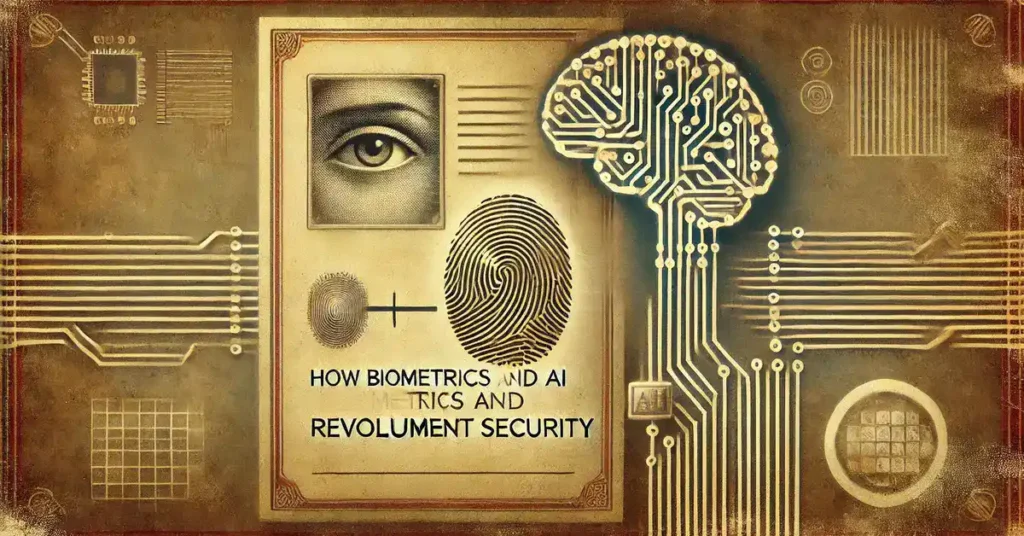A Major Challenge in the Age of Digital Transformation
Document security has become a critical issue in today’s era of digital transformation. The progressive digitization of exchanges makes life easier for users and organizations but also creates new vulnerabilities.
Fraud, counterfeiting, and identity theft are on the rise, threatening confidence in online services. In response, the convergence of biometrics and artificial intelligence (AI) now offers powerful and innovative solutions that both increase protection levels and simplify verification processes.
Regulatory Developments and the Importance of Biometrics
Recent regulatory changes have heightened the need to secure every step of the document chain. Regulations aimed at combating fraud or money laundering, as well as the GDPR (General Data Protection Regulation), in particular, require better identification of individuals and stricter confidentiality of shared information.
Biometrics fits perfectly into this framework, since biometric data—whether fingerprints, iris scans, or facial recognition—cannot be easily copied or used fraudulently. Compared to traditional methods (passwords, physical tokens, PINs), they provide more reliable and accurate identification while significantly reducing the risk of human error.
See the Wikipedia article on this subject.
The Central Role of Artificial Intelligence in Fraud Detection
Artificial intelligence, especially machine learning and deep learning, plays a crucial role in detecting anomalies and fraud attempts. Algorithms learn gradually to spot irregularities in a document’s structure or in the identity information provided.
The more data they process, the better they become at refining their detection models, even identifying counterfeiting methods that are still relatively unknown. This real-time adaptability is a major asset in the fight against increasingly skilled fraudsters, who can swiftly circumvent outdated security barriers.
The Effectiveness of Biometrics and AI in the KYC Process
In the context of KYC (Know Your Customer) or remote identity verification, the combination of biometrics and AI is already widely used. When enrolling a new client, for instance, a selfie is compared to an official ID document using facial recognition algorithms.
At the same time, automated document analysis detects any potential tampering, such as photo retouching or inconsistencies in metadata. This multipoint approach provides strengthened protection and significantly cuts authentication times, improving the user experience.
AI for Document Classification and Indexing
Beyond verifying identities, AI contributes to document security by automating the classification and indexing of information. It identifies the type of document (contract, invoice, bank statement) and extracts key data to organize them in centralized databases.
In addition to saving staff time, this automation reduces manual handling and minimizes the risk of errors or document loss. Over time, AI can even anticipate user needs and suggest additional checks based on the sensitivity level of the information involved.
Promising Future Prospects
The future looks equally promising. Advances in deep learning are paving the way for even more precise and reliable biometric solutions, such as retina or voice recognition and gait analysis.
Some players are also exploring the use of complementary technologies like blockchain to create a tamper-proof record of a document’s history—from its creation to its retrieval. In this context, document security is becoming increasingly robust, integrating various technological components into a global and coherent architecture.
Wide-Ranging Applications Across Numerous Sectors
Biometrics and AI are being adopted for document security in multiple sectors, including finance, insurance, public administration, healthcare, e-commerce, and more.
Financial institutions, for example, use these innovations to enhance their compliance measures and guard against fraud-related losses, while healthcare providers implement biometric solutions to protect medical records and maintain patient confidentiality. Governments can use biometric data to secure identity cards or passports, thus improving credibility and performance, and boosting citizens’ trust in digitized services.
An Enhanced User Experience
Users appreciate the convenience and speed of digitized verification processes. Facial recognition and fingerprint scanning eliminate the need for multiple forms of identification, codes, or passwords.
This streamlined approach heightens overall satisfaction and reduces abandonment rates during onboarding. In turn, businesses benefit from increased competitiveness and a stronger brand image, highlighting their ability to innovate and to safeguard customer data effectively.
A Driver of Differentiation and Growth
In an increasingly competitive environment, document security can no longer be viewed merely as a cost center or a regulatory hurdle; it is now a key factor in differentiation and customer retention. Biometric solutions and AI-powered systems allow for robust, instantaneous, and scalable authentication, adapting to new fraud tactics.
By lowering risks and associated costs while offering an optimized user experience, these technologies become a strategic investment for organizations aiming to sustain growth and protect their reputation.
Toward Comprehensive Digital Trust
This unfolding revolution, driven by biometrics and artificial intelligence, goes far beyond merely protecting documents. It plays a vital role in building comprehensive digital trust, which is essential for smooth exchanges and the continued expansion of online services.
Ongoing algorithm improvements, the proliferation of use cases, and close collaboration among public and private stakeholders point to a future in which document security is not only guaranteed but nearly seamless for end users. Companies and institutions that seize this opportunity will gain a clear competitive edge while helping raise the overall level of trust in the digital economy.
Individuals, do you occasionally need to verify one or more identity documents ?
Professionals, do you need to integrate proof of identity validation into one of your business processes, including all European identity cards and global passports ?



